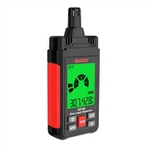Is it possible to heat a soldering iron in the absence of oxygen?
Soldering irons can be heated in the absence of oxygen. Because oxygen does not participate in the heating process of the soldering iron.
The electric soldering iron is heated by the heating phenomenon when the current passes through the alloy resistance wire. Electric soldering irons can be roughly divided into two types: internal heating type and external heating type.
The external heating type puts the soldering iron tip at the center of the heating body. Because the heat source comes from the outside of the soldering iron tip, it is called the external heating type. The internal heating type makes the tip of the soldering iron hollow, and the heating element is placed in the cavity, so the volume is relatively small.
Although the oxygen mentioned by the subject does not play any role in the heating process of the soldering iron, it still has a great "contribution" in interfering with soldering and shortening the life of the soldering iron.
The heating wire in a high temperature state will oxidize in an aerobic environment. Over time, the oxide layer will fall off, causing the heating wire to become thinner and damaged, and shorten the service life of the soldering iron. In addition, oxygen will also cause an oxide layer to appear on the surface of the molten tin and the metal to be welded, blocking the welding process. For this reason, soldering work is inseparable from flux, and its function is to prevent oxidation.
If it is really possible to create an oxygen-free environment for welding, it will greatly improve the welding efficiency, welding aluminum will become a breeze, and at the same time it can extend the service life of the electric soldering iron.
In the actual use of electric soldering iron should pay attention to the following points
①Choose an electric soldering iron with a suitable wattage, and do not overheat the soldering iron, otherwise it will waste electric energy and accelerate the oxidation process and affect welding.
② Learn to observe and judge the temperature and fluidity of solder. When the soldering temperature is suitable, the surface will be very bright silvery white and have good fluidity. If the surface turns blue quickly, it means that the temperature is too high, you need to reduce the wattage or use a constant temperature soldering iron.
③Prevent severe vibration. Because the high-temperature-resistant materials used to make soldering iron cores are made of ceramics or mica, they are easy to break and should be handled with care when using them.
④ It is strictly forbidden to use acidic flux when soldering electronic components to prevent corrosion and leakage. The best flux is rosin. However, when welding steel parts, if there is difficulty in tinning, you can first use acidic flux to do the tinning work, then carefully clean it, and finally use rosin to help complete the soldering.





